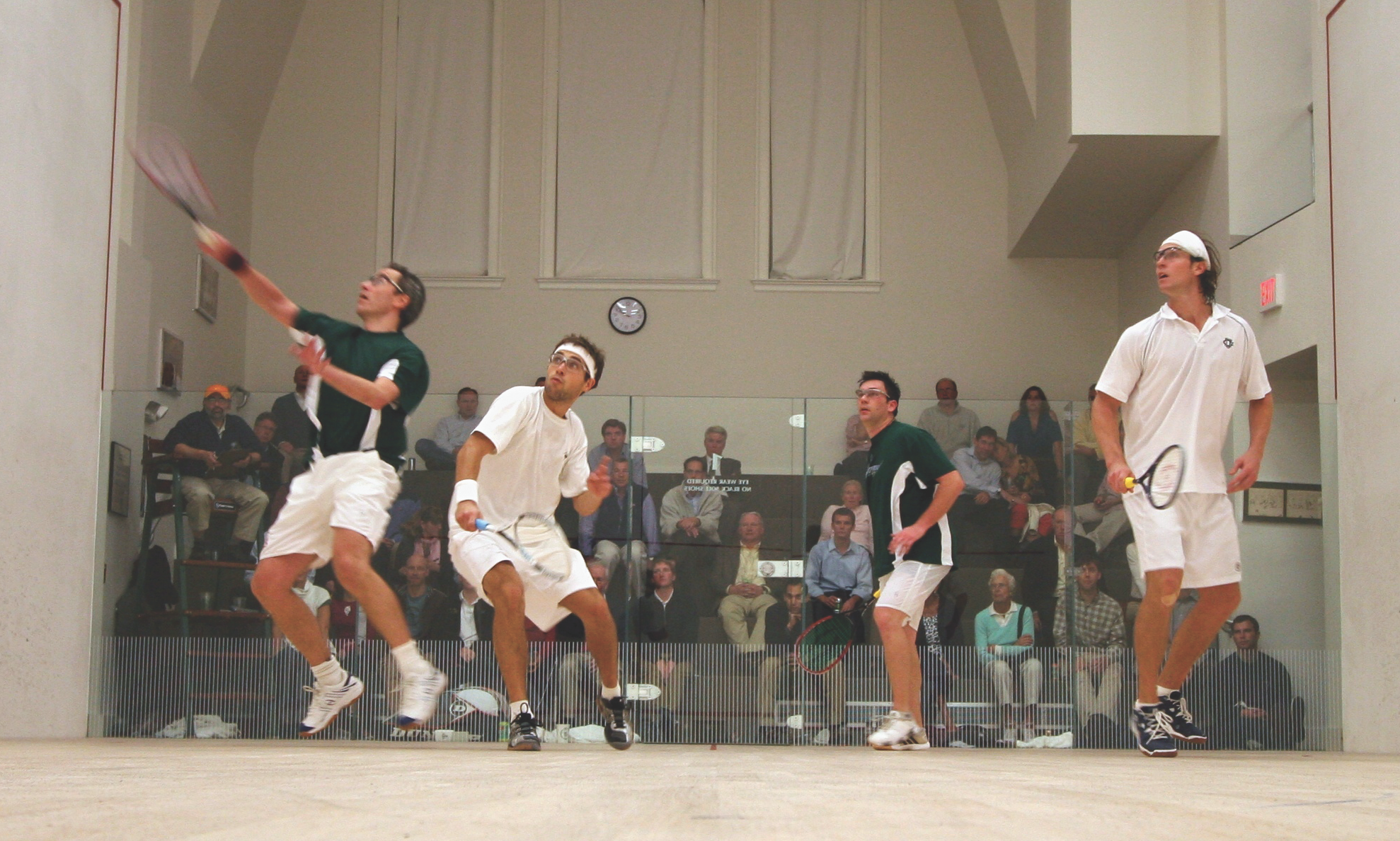
By James Zug
The richest squash tournament in the Western Hemisphere is one way to look at the $145,000 Briggs Cup.
Another is to see how it affects the CitySquash program on a randomly-picked day. I asked Tim Wyant, CitySquash’s director, to pick one. So he did. On this Thursday, a few weeks after the Briggs Cup, 120 kids in the Bronx were running through the now-familiar urban squash schedule of practice and tutoring. Some of what was behind that daily work and play—the salaries for the nine full-time staff, for instance—linked right back to the Briggs Cup, which has in its four biennial stagings raised an astonishing total of $570,000 for CitySquash. But the connections are deeper. Nearly half the board of CitySquash are Apawamis Club members, as are many of the annual donors to the program. Children of members work as counselors at CitySquash summer camps.
But what was equally interesting was to see the personal links that emerged from the Briggs Cup. On this Thursday, Wyant got an email from an Apawamis family. They had met two CitySquashers at the tournament and wanted to invite them out to their house for the Thanksgiving weekend. He also got an email with some hazy photographs attached. It was from an Apawamis woman who had begun to mentor a CitySquasher she had met at the tournament. The day before she had driven out to a Connecticut boarding school and spent the afternoon with him, taking him to lunch, getting a tour of the campus, watching his soccer game and meeting with his advisor. The boy was new to the school. He liked physics, was not sure about soccer and was getting over his homesickness. It was this connection, someone who was looking after him, bringing him a crate of snacks, that was making a difference. And next time she was going to remember her camera, rather than rely on her old cell phone.
Mentoring works. At the core of CitySquash and other urban programs is not squash or trips or tutoring, but people connecting with people. If you read any book about underserved, big-dreaming children reaching the pinnacle of success—Michael Lewis’ The Blind Side has been in the news because his character, Michael Oher, had gone from being homeless and attending eleven schools in nine years to becoming the starting right tackle for the Baltimore Ravens and the subject of a major motion picture—you read about the power of mentoring. And the Briggs Cup makes that happen.
It also makes manna shower down on the fifty-odd professional squash doubles players who come to Rye eager to finally make a decent payday. Fourteen teams entered the qualies, including players with the word “world” near their name—world No. 30 Julian Illingworth, world racquets champion James Stout, former world No. 4 Martin Heath and former world No. 7 Mark Chaloner. And let’s not forget the world’s most ageless jackrabbit, Willie Hosey. He’s 48, twice the age of Tim Porter who with Greg Park put him and Chaloner out in the opening main draw round. Porter and Park—so new to the ISDA tour that they are not featured in the otherwise comprehensive list of player profiles on their slick website—one of the two all American teams in the quarters. The other was Joe Pentland and Whitten Morris. In addition, two Apamawis guys, John McAtee and Tom Clayton, qualified through to the main draw, the first time a Briggs Cup supporter ever did so. (They donated their prize money to CitySquash). It bodes well for the future of American squash doubles.
Defending champions Paul Price and Ben Gould lost in the semis to Matt Jenson and Clive Leach. Jenson flew in early from his new base in San Francisco to train with Leach and they looked very strong. They flashed to a 1-0 lead in the finals before Damien Mudge and Viktor Berg regained control of the match to win in four.
Much of the excitement of the weekend—and all but one of the five-gamer matches at Apawamis that weekend—came from the 48 teams in the three-divisioned pro-am tournaments. For the first time, women and juniors were entered. In one final, they had both, with Michael Walsh, a sixteen year-old, teaming with Carl Baglio to take out Baglio’s boss Damien Mudge and Nan O’Neill, 15-12 in the fifth.
Under the direction of Peter Briggs, Steve Mandel and Peer Pedersen, the renovated club—three to five singles courts and one to two doubles—throbbed with energy all weekend. In this economic environment, with the Greenwich/Rye district being one of the epicenters of financial meltdown, it was remarkable that CitySquash could put on a lucrative tournament and still net a six-figure donation. It was a testament to hard work but also to the business model—a charity presenting the tournament, with most of everyone’s donation for the weekend being tax deductible. The PGA has done this for years and recently U.S. Squash has eagerly picked up on this model. They have run or worked with a number of tournaments—the North American Open doubles, the Johnson, the Kellner, Carol Weymuller, S.L. Green, U.S. Open, Greenwich Open, Texas Open and U.S. Junior Silver Championships—to raise funds for junior development, the junior endowment fund, NUSEA and to offer scholarships to urban program graduates for high school or college tuition. In fact, U.S. SQUASH now annually produces more prize money and more charitable donations each year than the biannual Briggs Cup.
But no one else does the Briggs Cup mondel. Is that squash’s blind side?


